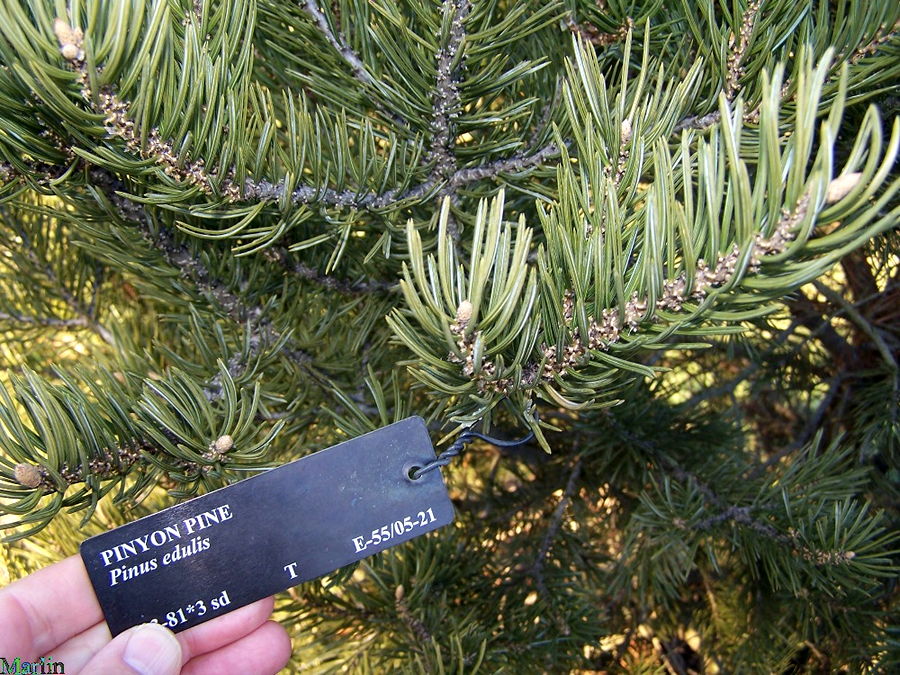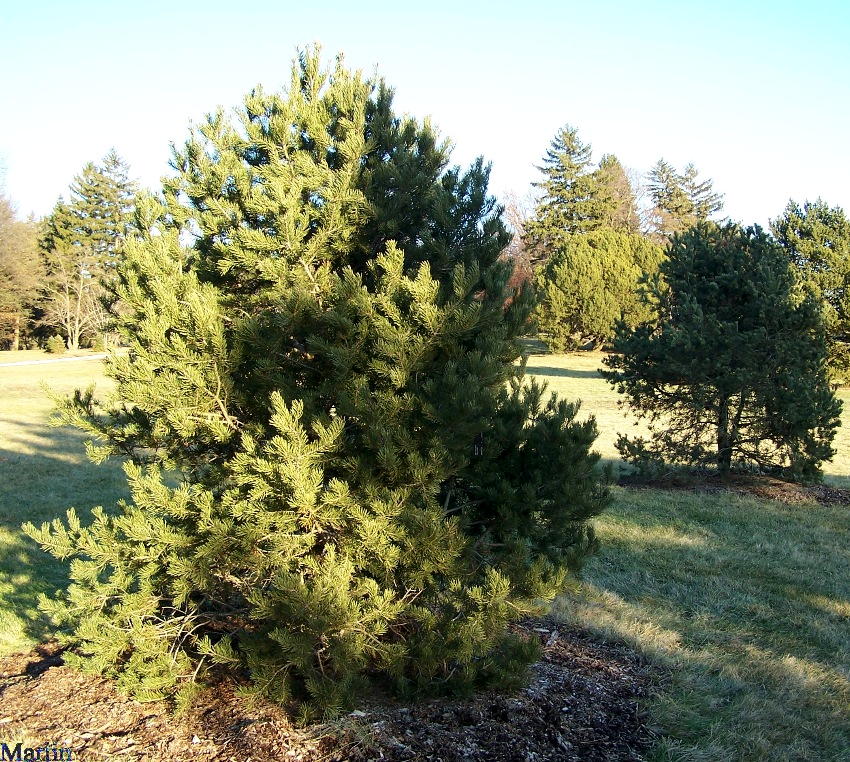Piñon Pine – Pinus edulis

Family Pinaceae: Pine, Cedar, Spruce, Fir
Pinyon is a small, drought-hardy, long-lived tree widespread in the southwest U.S.
Pinyon is a small, drought-hardy, long-lived tree widespread in the southwestern United States. Its common name is derived from the Spanish piñon which refers to the large seed. For this reason the tree is known in the Southwest and throughout its range by this Spanish equivalent. Other common names are Colorado pinyon, nut pine, two-needle pinyon, and two-leaf pinyon. Its heavy, yellow wood is used primarily for fuel. Because of their delicate flavor its seeds are in much demand, making them its most valuable product. The edible nuts of pinyon are probably the most valuable product of the species and are in great demand because of their delicate flavor. Common names include Colorado pinyon, nut pine, two-needle pinyon, and two-leaf pinyon. (1)

Pinyon has long been used for firewood in rural communities of the Southwestern U.S. Pinyon is preferred for fuelwood since it has a higher heat value than any of its associates except the oaks, and burns with a pleasing and distinctive aroma. Although pinyon has physical properties similar to those of ponderosa pine and is suitable for processing, it is not extensively used for sawn products because of poor growth form and small size. Specialized woodworking shops use pinyon for novelties, and small sawmills produce mine timbers and railroad ties.
The edible nuts of pinyon are probably the most valuable product of the species and are in great demand because of their delicate flavor. Annual nut crops have been estimated to average between 454 000 and 907 000 kg (1 to 2 million lb), reaching 3.6 million kg (8 million lb) in an exceptionally productive year. Commercial crops are practically nonexistent in some years, however. Nuts are commonly sold and consumed after roasting in the shell, but small quantities are sold raw. A limited retail market exists for shelled nuts, which have also been used in candies and other confections.
Pinyon-juniper woodlands over the past 400 years have been, and will continue to be, grazed extensively. Furthermore, range improvement practices to increase forage for wildlife and livestock have removed the woodland trees over large areas. Woodland watersheds also have been mechanically cleared or chemically treated in the past, but future treatments may be limited to specific areas, because the possibility of generally increasing water yield does not appear promising. Pinyon-juniper woodlands provide a habitat for a varied wildlife population.
Mule deer, white-tailed deer, elk, desert cottontail, mountain cottontail, and wild turkey provide increasing hunter recreation. Pinyon nuts are a preferred food for turkeys, but in poor seed years, juniper mast is also consumed. Similarly, deer subsist on browse species, but pinyon is a common food particularly during harsh winters with deep snow. (1)
References
1. USDA Forest Service Silvics Manual Conifers – Pinus edulis
2. Pinyon pine, Morton Arboretum acc. 232-81-3 photos © Bruce Marlin
Trees Index | Pine Family | Beech, Oak | Nut Trees | Birch Family | Magnolias
Tree Encyclopedia / North American Insects & Spiders is dedicated to providing family-friendly educational
resources for our friends around the world through large images and macro photographs of flora and fauna.

